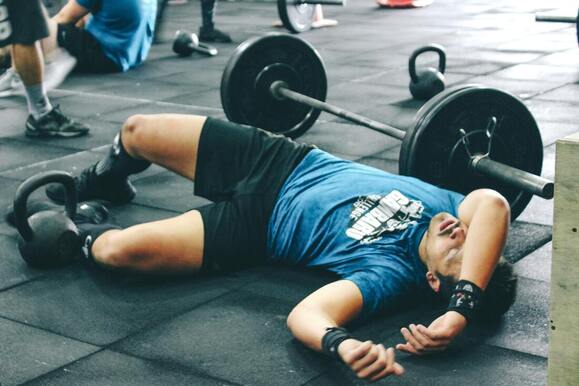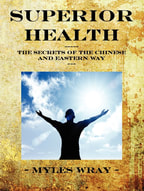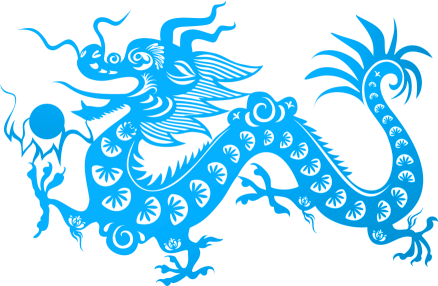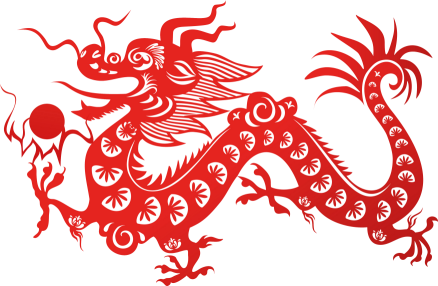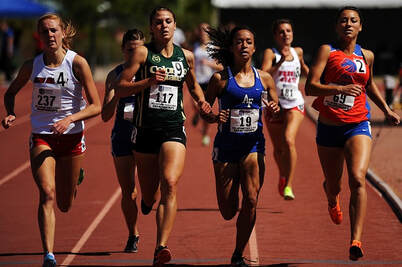
Let’s start this blog post by taking a look at Western exercise…
There are different intensities of exercise in the West, from moderate paced walking to intense running.
In this article, we will concentrate more on the strenuous activities that are popular in the West; like running, aerobics and competitive sports.
That is anything that gets your heart thumping, pulse racing or your lungs panting hard for more than a short period of time. Or that breaks you out into a strong sweat.
In terms of health, there are benefits you can get from intense exercise, such as increases in circulation and a reduced risk in cancer. But these can also be achieved by more moderate exercise.
So the question becomes, should we really be doing hard intense exercises ?
Well let’s take a look at a few problems it can cause and see whether it is still worth it…
There are different intensities of exercise in the West, from moderate paced walking to intense running.
In this article, we will concentrate more on the strenuous activities that are popular in the West; like running, aerobics and competitive sports.
That is anything that gets your heart thumping, pulse racing or your lungs panting hard for more than a short period of time. Or that breaks you out into a strong sweat.
In terms of health, there are benefits you can get from intense exercise, such as increases in circulation and a reduced risk in cancer. But these can also be achieved by more moderate exercise.
So the question becomes, should we really be doing hard intense exercises ?
Well let’s take a look at a few problems it can cause and see whether it is still worth it…
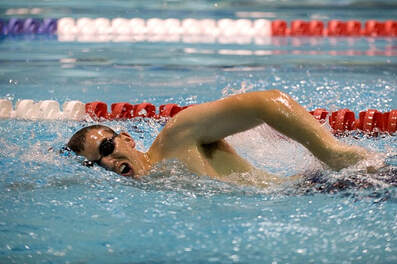
Firstly, it depletes your energy levels rapidly. You literally burn up your energy as you force yourself through whatever difficult activity you are doing.
A little bit of activity can wake you up and get your energy to come alive, but when you keep pushing, your stores of energy soon start to be depleted. In particular you use up levels of stored energy from the food you have consumed.
When your energy becomes weak, both the organs and the mind have less power to do their jobs, so the system starts to become weaker. This will literally have implications for the entire body and mind, nowhere will escape. Every part of you, from the digestion, to the liver, to the kidneys, may all lose their energy and begin to weaken.
One such area is the immune system. As we have learned in previous articles, anything that weakens your immune system, be it cold or now exercise, leaves it without any power to build an army of defender cells when your body comes under threat from external bugs.
Athletes are often more vulnerable to catching colds than those who do not exercise. Many of them can also suffer from chronic infections.
In fact, it was shown in a U.S. study that sturdy muscular American footballers are much more likely to pick up M.R.S.A. than the general population. Many teams have to disinfect equipment regularly to try to combat this. However in reality their real threat has not come from exposure to germs on their equipment, but from draining the life force from their immune systems and depleting it through over exercising.
A little bit of activity can wake you up and get your energy to come alive, but when you keep pushing, your stores of energy soon start to be depleted. In particular you use up levels of stored energy from the food you have consumed.
When your energy becomes weak, both the organs and the mind have less power to do their jobs, so the system starts to become weaker. This will literally have implications for the entire body and mind, nowhere will escape. Every part of you, from the digestion, to the liver, to the kidneys, may all lose their energy and begin to weaken.
One such area is the immune system. As we have learned in previous articles, anything that weakens your immune system, be it cold or now exercise, leaves it without any power to build an army of defender cells when your body comes under threat from external bugs.
Athletes are often more vulnerable to catching colds than those who do not exercise. Many of them can also suffer from chronic infections.
In fact, it was shown in a U.S. study that sturdy muscular American footballers are much more likely to pick up M.R.S.A. than the general population. Many teams have to disinfect equipment regularly to try to combat this. However in reality their real threat has not come from exposure to germs on their equipment, but from draining the life force from their immune systems and depleting it through over exercising.
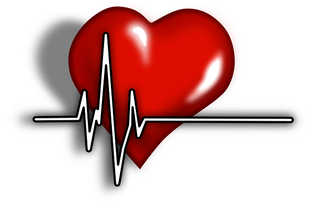
Other organs like the heart can over time weaken from the loss of energy too.
Even in Western Medicine they understand the importance of the heart maintaining good power levels. They recognize that there is an electrical pulse that keeps your heart going. An artificial pacemaker is sometimes used in western medicine to provide electrical pulses to create this pulse if your heart fails to have enough power to do so.
When you over exercise, you may weaken the electrical energy your heart needs to have to keep a strong and steady heart beat. This may be one of the causes of sudden cardiac death - a condition which causes seemingly healthy athletes to drop dead during intense exercise.
Sudden cardiac arrest affects more than 400,000 people in the U.S. every year.
According to the International Olympic Committee, it is estimated to kill anywhere from 1 in 15,000 to 1 in 50,000 athletes.
Under the age of 50, that gives athletes about three times higher chances of suddenly dropping dead than an average ordinary person who doesn't do any exercise has.
The physical heart too, is often put under major pressure by extreme exercise. In some athletes, such as rowers and cyclists, the heart can increase its mass to nearly twice the size of a normal heart. Other conditions such as obesity and high blood pressure can cause the heart to enlarge as well, but unlike exercise these are clearly recognized as bad for you in the West.
Another sign of weakness in the heart in athletes is the slow pulse rate. In healthy energetic babies the pulse is around 160 beats per minute. As you age it slows down. In young adults it is about 80 beats per minute, in the elderly it can be as low as 50 to 60 beats per minute and in athletes only 40 to 50 beats per minute. In Western Medicine this is because athletes hearts are said to be working more efficiently. Perhaps they are or perhaps it is because their heart energy has weakened ?
Even in Western Medicine they understand the importance of the heart maintaining good power levels. They recognize that there is an electrical pulse that keeps your heart going. An artificial pacemaker is sometimes used in western medicine to provide electrical pulses to create this pulse if your heart fails to have enough power to do so.
When you over exercise, you may weaken the electrical energy your heart needs to have to keep a strong and steady heart beat. This may be one of the causes of sudden cardiac death - a condition which causes seemingly healthy athletes to drop dead during intense exercise.
Sudden cardiac arrest affects more than 400,000 people in the U.S. every year.
According to the International Olympic Committee, it is estimated to kill anywhere from 1 in 15,000 to 1 in 50,000 athletes.
Under the age of 50, that gives athletes about three times higher chances of suddenly dropping dead than an average ordinary person who doesn't do any exercise has.
The physical heart too, is often put under major pressure by extreme exercise. In some athletes, such as rowers and cyclists, the heart can increase its mass to nearly twice the size of a normal heart. Other conditions such as obesity and high blood pressure can cause the heart to enlarge as well, but unlike exercise these are clearly recognized as bad for you in the West.
Another sign of weakness in the heart in athletes is the slow pulse rate. In healthy energetic babies the pulse is around 160 beats per minute. As you age it slows down. In young adults it is about 80 beats per minute, in the elderly it can be as low as 50 to 60 beats per minute and in athletes only 40 to 50 beats per minute. In Western Medicine this is because athletes hearts are said to be working more efficiently. Perhaps they are or perhaps it is because their heart energy has weakened ?
A study by St. Lukes Mid-America Institute looked at 781 college athletes using electrocardiograms, between the ages of 18 and 21 years old. It found signs of heart abnormalities in about one third of them. And found signs of potential heart disease in one in ten of them.
Another study from New York University appeared in the American Journal Of Cardiology. The study which focused on 17,000 men, found that those who exercised hard enough to break into a significant sweat five to seven days per week, increased their odds of atrial fibrillation by 20 percent. This was in comparison to those who did no vigorous exercising. This heart rhythm disorder can lead to fainting, heart attacks and strokes.
Another study from New York University appeared in the American Journal Of Cardiology. The study which focused on 17,000 men, found that those who exercised hard enough to break into a significant sweat five to seven days per week, increased their odds of atrial fibrillation by 20 percent. This was in comparison to those who did no vigorous exercising. This heart rhythm disorder can lead to fainting, heart attacks and strokes.

Exercise also depletes levels of nutrients in your body and in the blood itself. It does this in several ways…
Firstly they are used up during the demands for energy from the exercise itself.
Then after the exercise, blood and nutrients are used to repair damage to your muscles caused by the strenuous activity.
This obviously has a detrimental effect on the rest of the body as well. The blood has now been depleted and weakened, so it is less effective. It is being directed to the large muscles found in the legs, arms, back and chest and away from the organs and the brain, which need it the most to keep everything running healthily. On the outside, the muscles are becoming bigger, more defined and toned, but internally the organs are paying the price for this.
Another sign of blood deficiency appears in female athletes; their blood may become so weak, that their periods can become irregular and even stop altogether.
The most serious consequence in Chinese Medicine from over-exercising, is to do with depletion of what the Chinese call the ‘Jing’ essence in the body. This is basically similar to your hormones.
Every time your body comes under any threat, your adrenal glands will release some of this substance in the form of hormones into your system.
When you over exercise you usually end up tearing the red and white muscle fibers. These will need to be rebuilt, so the body uses growth hormones and other ones to do this. This is why many body builders and athletes will often take cortisol, testosterone and other steroids to build extra muscle and power in their systems.
Firstly they are used up during the demands for energy from the exercise itself.
Then after the exercise, blood and nutrients are used to repair damage to your muscles caused by the strenuous activity.
This obviously has a detrimental effect on the rest of the body as well. The blood has now been depleted and weakened, so it is less effective. It is being directed to the large muscles found in the legs, arms, back and chest and away from the organs and the brain, which need it the most to keep everything running healthily. On the outside, the muscles are becoming bigger, more defined and toned, but internally the organs are paying the price for this.
Another sign of blood deficiency appears in female athletes; their blood may become so weak, that their periods can become irregular and even stop altogether.
The most serious consequence in Chinese Medicine from over-exercising, is to do with depletion of what the Chinese call the ‘Jing’ essence in the body. This is basically similar to your hormones.
Every time your body comes under any threat, your adrenal glands will release some of this substance in the form of hormones into your system.
When you over exercise you usually end up tearing the red and white muscle fibers. These will need to be rebuilt, so the body uses growth hormones and other ones to do this. This is why many body builders and athletes will often take cortisol, testosterone and other steroids to build extra muscle and power in their systems.
When you deplete your own natural hormones, the consequences of this are two fold…
Firstly it directs these vital substances away from the most important areas - your organs and your mind.
And secondly if you persist in constantly demanding more and more hormones to repair and rebuild muscles, you may find that the adrenal glands and other important hormone creators eventually tire out. With this exhaustion they lose their power to even create the necessary hormones to run and keep the rest of the body healthy.
Although physically the muscles may be well toned and enlarged, you will find in other ways the body becomes weaker and weaker.
The mind can also be badly affected by too much exercise. When levels of energy, blood, nutrients and hormones have fallen or have been redirected away from the brain, it begins to cause low moods, mood swings, anxiety, irritability, anger and other mental illnesses.
The short term effects of strenuous exercise can mislead and fool the athlete into thinking their mood is improving. They will initially get lots of oxygen pumped into the brain, which will give it a temporary high. And while their adrenal glands are still functioning properly, they will also get a boost from hormones released into the bloodstream and mind during exercise.
However, as substances are used up and the organs weaken, then long term the opposite will start to happen in most people. And when they are not exercising, their blood, nutrient, energy and hormone levels will be lower than is required to keep their mind and emotions, steady, healthy and happy.
Other problems that can come about from too much exercise include the acceleration of aging. This can come from decreases in hormones and from depleting nourishing blood. And also from dehydration from intense activity and even from reducing body fat or oils to unhealthy low levels.
Firstly it directs these vital substances away from the most important areas - your organs and your mind.
And secondly if you persist in constantly demanding more and more hormones to repair and rebuild muscles, you may find that the adrenal glands and other important hormone creators eventually tire out. With this exhaustion they lose their power to even create the necessary hormones to run and keep the rest of the body healthy.
Although physically the muscles may be well toned and enlarged, you will find in other ways the body becomes weaker and weaker.
The mind can also be badly affected by too much exercise. When levels of energy, blood, nutrients and hormones have fallen or have been redirected away from the brain, it begins to cause low moods, mood swings, anxiety, irritability, anger and other mental illnesses.
The short term effects of strenuous exercise can mislead and fool the athlete into thinking their mood is improving. They will initially get lots of oxygen pumped into the brain, which will give it a temporary high. And while their adrenal glands are still functioning properly, they will also get a boost from hormones released into the bloodstream and mind during exercise.
However, as substances are used up and the organs weaken, then long term the opposite will start to happen in most people. And when they are not exercising, their blood, nutrient, energy and hormone levels will be lower than is required to keep their mind and emotions, steady, healthy and happy.
Other problems that can come about from too much exercise include the acceleration of aging. This can come from decreases in hormones and from depleting nourishing blood. And also from dehydration from intense activity and even from reducing body fat or oils to unhealthy low levels.
The Norwegian University Of Science And Technology, found in their study of 3000 women, that those who exercised daily or to the point of exhaustion had the highest levels of risk for infertility. As much as three times higher risk of infertility than the national average.
A study of 90,000 women by the University Of Southern Denmark, showed that those who played high impact sports like ball games, racket sports or jogging while in early pregnancy, had three and a half times more chance of miscarriage compared to those women who did no exercise at all.
Many studies have linked sports with arthritis and osteoporosis. The constant pounding and pressure on joints and bones is often too much to bare, leading frequently to problems in hips, knees, elbows, ankles, wrists, shoulders and spines in later life.
The Journal Of Occupational And Environmental Health reported on a Swedish study of 500 physical education teachers, it was found that they were more likely to have arthritis of the knee and three times more likely to have arthritis of the hip than the general public were.
A study at Coventry University interviewed 300 former footballers and found that 49 percent had been diagnosed with osteoarthritis. One in three had to have surgery since retiring from the game. And 15 percent of them were now officially registered as being disabled.
The British Journal Of Sports Medicine reported a study on 50 elite athletic swimmers. Nearly all of them had inflamed lung tissue.
Another study, this time in the European Respiratory Journal, also reported on a group of professional swimmers. They found that 70 percent of them, had airway hyper-responsiveness which can be a precursor to asthma. It is estimated that as many as one third of all professional swimmers have full blown asthma, 80 percent of which came about after they started swimming. The reason for this high level of asthma in swimmers has been blamed on the inhalation of the chemical chlorine used to keep pools clean.
However, high levels of asthma in athletes is not isolated just to swimming. A survey of 1,600 top athletes, conducted by the Norwegian University Of Sport And Physical Education found that approximately one in ten athletes, regardless of the type of sport, suffers from asthma or wheezing. Another survey by the U.S. Olympic Committee after the summer games in Atlanta, found that more than 16 percent of athletes responding to a questionnaire reported suffering from asthma.
A study of 90,000 women by the University Of Southern Denmark, showed that those who played high impact sports like ball games, racket sports or jogging while in early pregnancy, had three and a half times more chance of miscarriage compared to those women who did no exercise at all.
Many studies have linked sports with arthritis and osteoporosis. The constant pounding and pressure on joints and bones is often too much to bare, leading frequently to problems in hips, knees, elbows, ankles, wrists, shoulders and spines in later life.
The Journal Of Occupational And Environmental Health reported on a Swedish study of 500 physical education teachers, it was found that they were more likely to have arthritis of the knee and three times more likely to have arthritis of the hip than the general public were.
A study at Coventry University interviewed 300 former footballers and found that 49 percent had been diagnosed with osteoarthritis. One in three had to have surgery since retiring from the game. And 15 percent of them were now officially registered as being disabled.
The British Journal Of Sports Medicine reported a study on 50 elite athletic swimmers. Nearly all of them had inflamed lung tissue.
Another study, this time in the European Respiratory Journal, also reported on a group of professional swimmers. They found that 70 percent of them, had airway hyper-responsiveness which can be a precursor to asthma. It is estimated that as many as one third of all professional swimmers have full blown asthma, 80 percent of which came about after they started swimming. The reason for this high level of asthma in swimmers has been blamed on the inhalation of the chemical chlorine used to keep pools clean.
However, high levels of asthma in athletes is not isolated just to swimming. A survey of 1,600 top athletes, conducted by the Norwegian University Of Sport And Physical Education found that approximately one in ten athletes, regardless of the type of sport, suffers from asthma or wheezing. Another survey by the U.S. Olympic Committee after the summer games in Atlanta, found that more than 16 percent of athletes responding to a questionnaire reported suffering from asthma.
In Chinese Medicine, the reason why professional swimmers in particular have such high rates of asthma is not just from the chlorine, but is because they are exercising to the point of exhaustion and at the same time breathing in lots of damp heavy air. At the end of their training session, their overworked lungs have no longer the energy to expel this damp moisture, which over time starts to weaken them and create breathing difficulties.
Most people don’t realize that the history of intensive Western exercise is actually only a short one. Many gyms only began appearing and becoming popular on a wide scale in the mid nineteen eighties. Many new studies are now starting to show the negative long term effects of over exercising on people’s lives.
With the understandings about exercise that we can already learn from the well developed Chinese Medical viewpoint it is time for a complete rethink in the West.
It is time to move away from the promotion of hard core exercises to a more moderate version, which will be healthy and beneficial for everyone.
References –
- Caution killing germs may be hazardous to your health, J. Adler, J. Interlandi, Newsweek, 20-10-07.
www.newsweek.com/2007/10/20/caution-killing-germs-may-be-hazardous-to-your-health.html
- Sudden Cardiac Death: Should young athletes be screened, E. Harrell, Time, 10-09-09. Int Olympic Committee. www.time.com/time/health/article/0,8599,1921260,00.html
- Hidden heart problems for college athletes, A. Grayson, ABC news 30-03-09.
www.abcnews.go.com/Health/HeartDiseaseNews/story?id=7192905&page=1
Magalski A. et al, St. Lukes Mid America Heart Institute Kansas.
- Aizer A. et al, Relation of vigorous exercise to atrial fibri., Am. J. of Card., 2009;103(11):1572-7.
- Gudmundsdottir S. et al, Physical activity and fertility in women, Hu. Repr. 2009; 0 :p337v1-dep337
- Madsen M. et al, Leisure time physical exercise during pregnancy and the risk of miscarriage, BR. J. Obs. Gyna. ; 114(11):1419-26.
- Sandmark H., Musculoskeletal dysfunction in phys. edu. teachers, Occup Envir Med 2000;57:673-7.
- Turner A. et al, Long term health impact of playing pro. football, Br J Sports Med 2000;34:332-6.
- Belda J. et al, Airway inflammation in the elite athlete, Br J Sports Med 2008;42:244-8.
- Bougault V. et al, Asthma airway inflammation and epithelial damage in swimmers and cold air athletes, Eur Respir J 2009;33:740-6.
- Intensive exercise is bad for your lungs, Melville K.,05-09-00.
www.scienceagogo.com/news/20000804223050data_trunc_sys.shtml
Most people don’t realize that the history of intensive Western exercise is actually only a short one. Many gyms only began appearing and becoming popular on a wide scale in the mid nineteen eighties. Many new studies are now starting to show the negative long term effects of over exercising on people’s lives.
With the understandings about exercise that we can already learn from the well developed Chinese Medical viewpoint it is time for a complete rethink in the West.
It is time to move away from the promotion of hard core exercises to a more moderate version, which will be healthy and beneficial for everyone.
References –
- Caution killing germs may be hazardous to your health, J. Adler, J. Interlandi, Newsweek, 20-10-07.
www.newsweek.com/2007/10/20/caution-killing-germs-may-be-hazardous-to-your-health.html
- Sudden Cardiac Death: Should young athletes be screened, E. Harrell, Time, 10-09-09. Int Olympic Committee. www.time.com/time/health/article/0,8599,1921260,00.html
- Hidden heart problems for college athletes, A. Grayson, ABC news 30-03-09.
www.abcnews.go.com/Health/HeartDiseaseNews/story?id=7192905&page=1
Magalski A. et al, St. Lukes Mid America Heart Institute Kansas.
- Aizer A. et al, Relation of vigorous exercise to atrial fibri., Am. J. of Card., 2009;103(11):1572-7.
- Gudmundsdottir S. et al, Physical activity and fertility in women, Hu. Repr. 2009; 0 :p337v1-dep337
- Madsen M. et al, Leisure time physical exercise during pregnancy and the risk of miscarriage, BR. J. Obs. Gyna. ; 114(11):1419-26.
- Sandmark H., Musculoskeletal dysfunction in phys. edu. teachers, Occup Envir Med 2000;57:673-7.
- Turner A. et al, Long term health impact of playing pro. football, Br J Sports Med 2000;34:332-6.
- Belda J. et al, Airway inflammation in the elite athlete, Br J Sports Med 2008;42:244-8.
- Bougault V. et al, Asthma airway inflammation and epithelial damage in swimmers and cold air athletes, Eur Respir J 2009;33:740-6.
- Intensive exercise is bad for your lungs, Melville K.,05-09-00.
www.scienceagogo.com/news/20000804223050data_trunc_sys.shtml
